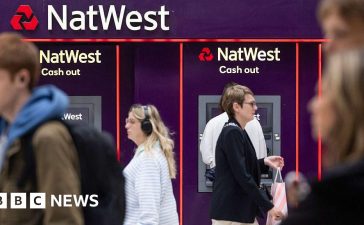Investing.com — Traders slightly increased their bets on the Federal Reserve delivering another 50-basis-point rate cut in November after a government report showed inflation rose modestly in August, paving the way for the central bank to prioritize the labor market.
Interest rate futures now reflect a 54% chance of a half-point cut in November, compared to a 46% chance of a smaller quarter-point reduction. Regardless of the outcome, traders are pricing in a total decline of 75 basis points by the end of the year, from the current policy rate of 4.75%-5.00%.
Strategists at Citi share the view that the Fed will cut rates by another 50 basis points in November, though they noted that the final decision will depend heavily on forthcoming data, particularly the next monthly jobs report.
While jobless claims remain low for now, attention is shifting towards the employment components of PMI data.
Fed Chair Jerome Powell characterized the initial 50-basis-point cut as a signal of the Fed’s readiness to act decisively if the labor market shows further signs of weakness.
“Should the unemployment rate stabilize around its current level, the Fed might choose to slow the pace of rate cuts to 25bp per meeting,” Citi strategists said in a recent note. However, they believe upcoming economic data may prompt the Fed to maintain a quicker pace of rate cuts.
Although Fed officials have been encouraged by stable jobless claims and low layoff rates, Citi highlights a slowing hiring rate and softer private payroll growth—now averaging about 90,000 new jobs per month—as signs of potential further increases in unemployment.
With two more jobs reports due before the November Federal Open Market Committee (FOMC) meeting, Fed officials will have more data to assess the softening trend in the labor market.
The personal consumption expenditures (PCE) price index, the Fed’s preferred inflation gauge, rose 0.1% in August, bringing the annual inflation rate to 2.2%, down from 2.5% in July and marking the lowest level since February 2021.
Economists had predicted a 0.1% monthly rise and a 2.3% annual increase.
Excluding food and energy, core PCE also rose 0.1% for the month, with a 2.7% year-over-year increase, matching forecasts. Fed officials often prioritize core PCE as a better indicator of long-term inflation trends. The annual core inflation rate was up slightly from July’s 2.6%.






